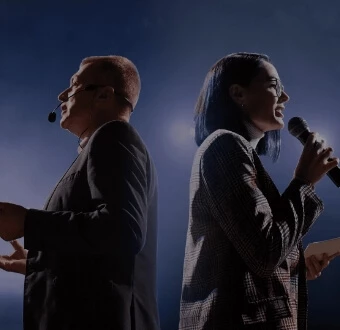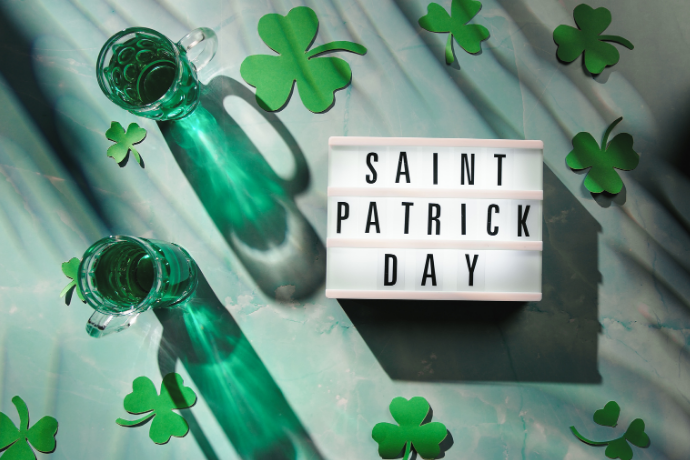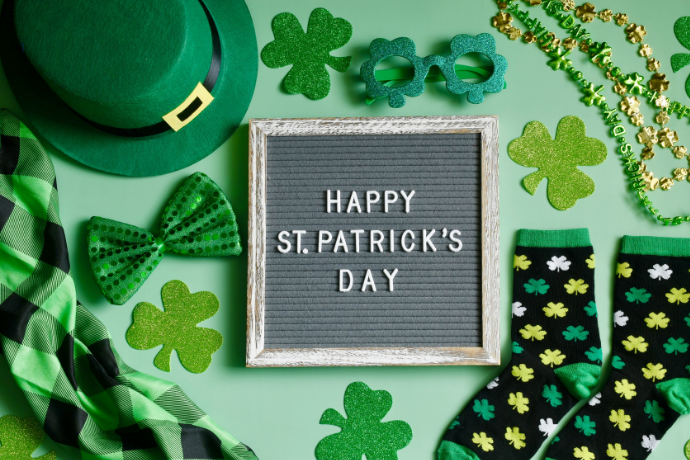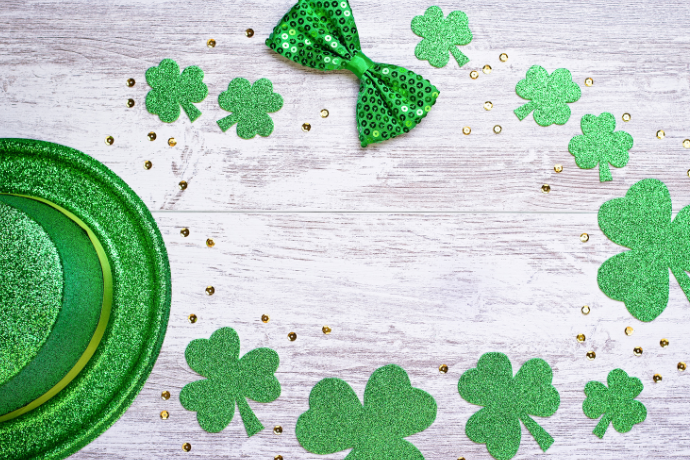 SPEAKERS
SPEAKERS
St. Patrick’s Day isn’t just a celebration—it’s a golden opportunity for brands to engage audiences through Irish heritage, creativity, and the universal spirit of luck.

St. Patrick's Day has arrived; the 17th of March is the date when brands globally have made this festival from a religious to an optimal time to celebrate their culture through celebration. The day presents a golden opportunity to engage audiences in terms of creativity, nostalgia, and what St. Patrick's Day offers. With more than 30 nations participating in the festivities, headed by the U.S., UK, and Ireland brands that connect with the spirit of Irish heritage, the symbolic emerald color scheme, and the global popularity of "luck" are poised to be big winners.
Understanding the story of St. Patrick's Day is crucial to creating authentic campaigns. The day remembers Saint Patrick, Ireland's patron saint, who supposedly established Christianity in Ireland. Legends surrounding his teachings, like using the shamrock to explain the Holy Trinity, helped shape symbols now inextricably associated with the day: shamrocks, leprechauns, and pots of gold.
St. Patrick's Day was originally invented in the 17th century as a religious feast day holiday. As the Irish came to emigrate all over the globe, particularly to America, the holiday gradually became one of Irish cultural commemoration. Parades, traditional music, and vibrant street festivities were some of the trends that became the standards, and the color green became equal to Irish pride.
Modern-day festivities extend far beyond religious fervor. In the United States, cities like Chicago dye rivers green, and in Dublin, there are spectacular parades. But for retailers, the day is not so much about heritage but about creating enthusiasm, community, and lighthearted enjoyment. Such a shift simplifies it for marketers across industries; everything from food and beverages to fashion and accessories, to leverage Irish magic on their campaigns. Some brands make it more interesting by hiring comedian speakers to give their customers an after-event laughter of a lifetime.
Green is not just a color; it's a marketing necessity. Most respondents wear green to avoid teasing pinches, and it's become the holiday's de facto uniform. Businesses piggyback St. Patrick's Day colors on:
Temporary green products, like Pandora's four-leaf clover charm or Dunkin's matcha-topped donuts, connect products to the holiday. Beauty brands introduce green-colored makeup products, such as eyeshadows and nail polish, to appeal to holiday celebrants.
Updating logos symbolically with shamrocks (think McDonald's Shamrock Shake) or wrapping packaging in emerald hues puts people in their places on shelves and screens. Etsy shops sell Irish-print crafts and accessories by solo vendors.
Associating "green" with green-friendly campaigns like tree-planting initiatives resonates with environmentally conscious consumers. Fashion brands like Patagonia create small-batch recycled clothing lines in bold green hues.
Even non-traditional categories are joining the fray. Flex Seal, known for adhesive products, previously playfully promoted its green tape as "leprechaun-proof," noting how just about any brand can be a good sport.

At $7.2 billion spent within the United States alone in 2024, St. Patrick's Day deals are a money goldmine. Successful promotions usually pair pressure, scarcity, and cultural mention.
Krispy Kreme offered customers green-free doughnuts, merging celebration with instant gratification. Guinness partnered with Ancestry to digitize old documents, bridging brand heritage with personal history. Irish pubs offer special deals on traditional items like shepherd's pie and fish and chips.
Discount stores and grocery chains a big percentage of holiday spending. Combining Irish-themed snacks, decorations, and apparel drives basket size. Apparel brands offer temporary promotions on green apparel and accessories.
Restaurants and bars, 20% of spending drivers, create themed menus. An example is corned beef with Irish whiskey pairings. Brands that hire after-dinner speakers add the icing to the cake by keeping guests entertained with Irish legends, turning dinner into an event to share. Tour operators offer discount vacations to Ireland, allowing consumers to experience the holiday's heritage firsthand.
Here are some tips to help brands make the most out of this day:
Consumers crave real-world connections. Planning pub crawls, parades, or family-friendly treasure hunts (like Lucky Charms' leprechaun trap campaign) promotes interaction. For B2B businesses, sponsorship of events builds goodwill.
Alcohol brands are the trendsetters, but pairing drinks with food boosts appeal. Think Guinness and stew specials or Jameson's whiskey-and-chocolate tastings. CPG brands like Cadbury promote "day-making" kindness campaigns, connecting treats to emotional moments.
Participatory campaigns boost engagement:
Exclusivity forces action. Pandora's clover charm and Krispy Kreme's two-day green doughnut offer are just two examples of how exclusivity fuels sales.
Collaborations expand reach. Carhartt and Guinness highlighted Chicago's plumbers, merging workwear pride with civic heritage.
Whereas things occur in real life, digital channels are needed for inspiration - 76% of consumers search online before visiting the physical store. Successful approaches are:
Social Media Challenges: Hashtag campaigns (e.g. #LuckOfTheIrish selfies) or online scavenger hunts.
Live Streams: Streaming parades or behind-the-scenes.
Interactive Ads: Jameson's "Sine Metu" video blended storytelling with brand philosophy, inviting viewers to "live a bit more."

Check out how various sectors can celebrate the day and make it unforgettable:
To optimize ROI, brands will need to track key metrics:
St. Patrick's Day's wide appeal; color, friendship, and fun give brands a rich canvas to play on. From green-branded merchandise to vintage collaborations, or digital gamification, the key is to leverage the Irish heritage of joy and sharing. The holiday is less about selling and more about creating experiences that make customers feel lucky long after March 17. So, put on your greenest thinking hat, and let your St. Patrick's Day strategy for your brand be profitable.